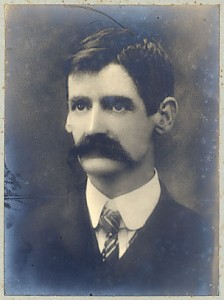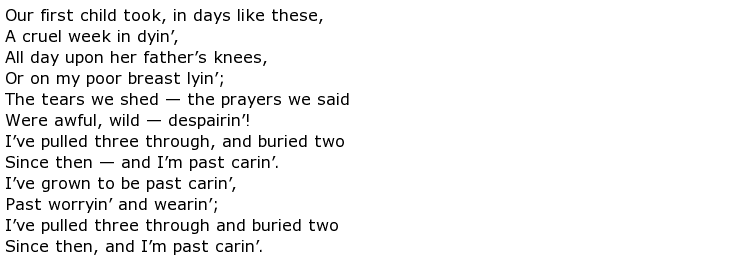 Son of the poet and publisher Louisa Lawson, Henry Lawson was born in New South Wales, Australia, in 1867. He went to school at Eurunduree but began to lose his hearing due to an ear infection and by the time he was fourteen was completely deaf. At a Catholic school in Mudgee, Lawson began to learn about poetry and reading, particularly Dickens and Marryat, and the past-time became a prime source of his early education.
Son of the poet and publisher Louisa Lawson, Henry Lawson was born in New South Wales, Australia, in 1867. He went to school at Eurunduree but began to lose his hearing due to an ear infection and by the time he was fourteen was completely deaf. At a Catholic school in Mudgee, Lawson began to learn about poetry and reading, particularly Dickens and Marryat, and the past-time became a prime source of his early education.
After working with his father on building sites, the young Henry Lawson moved to stay with his mother and there married Bertha Bredt Jr, daughter of a prominent socialist. Although the marriage ended unhappily, they had two children and Lawson began to garner some success in getting his poetry published.
His first poem, A Song of the Republic, appeared in the Australian weekly magazine The Bulletin. It was quickly followed by The Wreck of the Derry Castle and Golden Gully. Lawson was barely 20 at the time.

Lawson began to write for a variety of publications including the Boomerang in Brisbane and the Sydney Bulletin. On a trip into the inland regions of New South Wales, Lawson experienced at first hand the harsh world of the Australian bush and it influenced many of his early poems, primarily dispelling the mythical notion of a rural idyll that many writers of the time had expounded.
In 1896 he wrote perhaps his most successful work, While the Billy Boils, which was compared to the short, sharp sentences of both Hemingway and Carver. His poem Past Carin’ has been touted as one of the first, real descriptions of Australian life at the time:

Although he was probably the most celebrated writer of his time, Lawson was undoubtedly poor for most of his life and suffered from bouts of deep depression. In 1903 at the age of 36, he moved to a room in Mrs Isabel Byers’ Coffee House where her formed a long term friendship with Mrs Byers, but over the next 20 years he was imprisoned several times for drunkenness and non-payment of child maintenance to his ex-wife.
Without the help of Mrs Byers, herself a respectable poet, he would have struggled but she helped to negotiate with publishers and family on his behalf.
His time in jail led him to write the poem One Hundred and Three, the title based on his prison number:

Despite Mrs Byers who helped him through his mental and alcohol problems, Henry Lawson died of a brain hemorrhage in 1922. While his verse never reached the sophisticated heights of some of his contemporaries in the world of poetry, Lawson presented a snapshot, often bleak and unrepentant, of Australian life in the late 19th and early 20th century.
His appeal still endures and he is rightly considered one of Australia’s premier poets.

